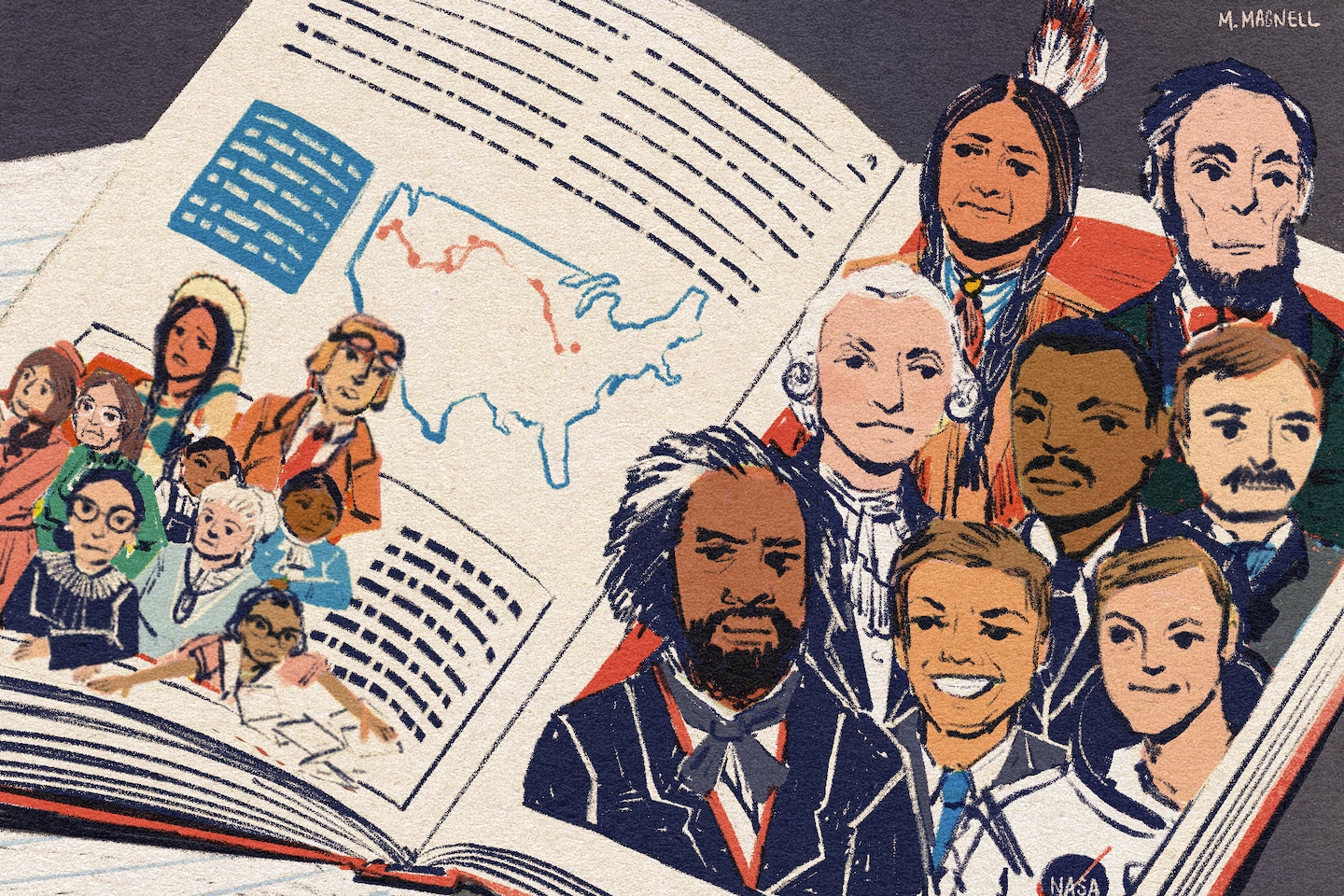In my advanced high school history textbook, it’s as if women didn’t exist

In this advanced text is a 20-page chapter on World War II. As I read about President Franklin D. Roosevelt, the Pan-American conferences and the war’s impact on society, I came across a paragraph creatively titled “Women.” Merely a hundred words later, “women” were abandoned.
I was bothered that the writers had deemed 100 words sufficient for teaching students everything important about women during that era. What bothered me even more was my own lack of surprise.
Perhaps some would say of course there are fewer famously influential women than men throughout history, considering the cultural norms that long created gender-based divisions and hierarchies. But that’s a lazy assumption. Curious, I did the least I could do — Googled “important women in American history” — and obtained myriad results. Which raises the question: Why did the writers of my textbook neglect to do the same? Or if they did bother, why was the information excluded?
If education reflects our societal values — and if textbooks provide the foundation of our education — then AP U.S. History is perpetuating for all students the idea that women are comparatively worthless. Worse, it’s sending the message to girls that their stories and accomplishments don’t matter.
After encountering the “Women” paragraph, I decided to conduct an (admittedly unscientific) experiment. I asked two questions of about 30 students from several Northern Virginia schools, half of them girls and half of them boys, ranging in age from 6 to 17 years old: 1) Who are some important people in American history? 2) Who are some important women in American history? (Note: The second question is one I shouldn’t have had to break out. But I suspected it was necessary.)
Respondents to the first question named a total of 35 men — and one woman. The girl who mentioned a woman was my second-grade cousin, who told me about Amelia Earhart because her substitute teacher had read her class a story about the acclaimed aviator earlier that day.
Among the named men, answers varied, from a few presidents to lists of activists, scientists, journalists, authors or other pioneers — roles that women, too, have held, though you might not know it if you attend American schools.
Responses to the second question were shocking. “I can’t think of any; we didn’t really learn about women,” a 10th-grade boy said. “As a girl it’s embarrassing that I can only name one,” a 14-year-old responded.
Among those who could name a woman, the list of answers was short: Rosa Parks (nine mentions); Harriet Tubman and Vice President Harris (five each); Clara Barton, Earhart and Susan B. Anthony (two each). Other responses included: “that one person who did the thing for women’s rights,” “the lady who was that president’s wife” and “who was the Underground Railroad girl?”
Nearly half my interviewees couldn’t name one historically influential woman. And these weren’t just little kids; they averaged 11 years old.
Here are 20 women it should be mandatory to learn about — and this list is by no means exhaustive: Jane Addams, Louisa May Alcott, Maya Angelou, Amelia Bloomer, Claudette Colvin, Mary Coffin Ware Dennett, Ruth Bader Ginsburg, Emma Goldman, Anne Hutchinson, Helen Keller, Sybil Ludington, Lucretia Mott, Jeannette Rankin, Eleanor Roosevelt, Sacagawea, Elizabeth Cady Stanton, Harriet Beecher Stowe, Sojourner Truth, Ida B. Wells and Edith Bolling Galt Wilson.
My textbook includes fewer than half of these women. Six merit less than a sentence, and only one is mentioned more than once.
Ever heard of John Crittenden? Joseph McCoy? Josiah Strong? The book discusses each more than any of the women on my list.
As we work toward women’s equality, education is holding us back. Here in 2021, young women are told we can make history and achieve anything. But that’s difficult to believe when history curriculums marginalize or ignore women’s accomplishments. When these facts are omitted from compulsory education, it becomes more difficult for students to see how gender-based inequities remain entrenched — which in turn will make it harder for us to escape them.
If your response to “Should history curriculums include women?” is “Well, duh!” — good for you. I hope that my generation can reach the point where “Well, duh!” is ubiquitous, and that one day I can laugh at the memory of my 7-year-old self asking such a ridiculous question.






